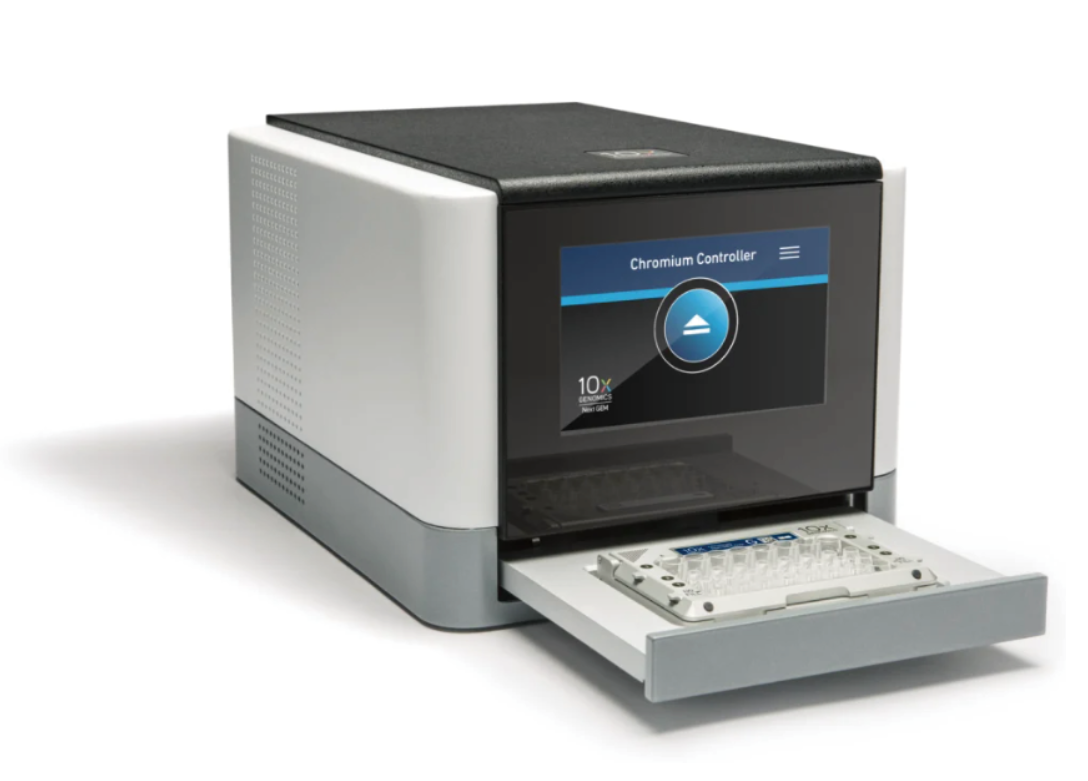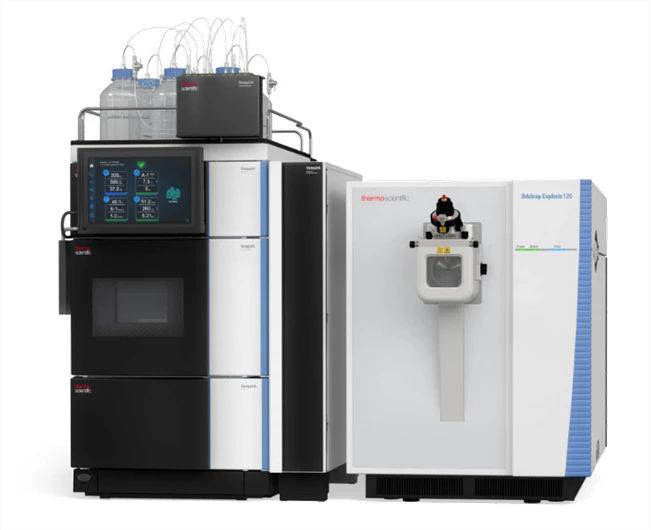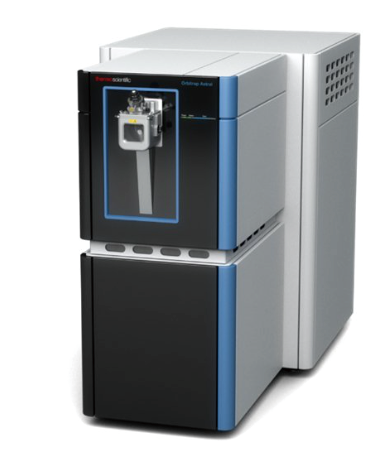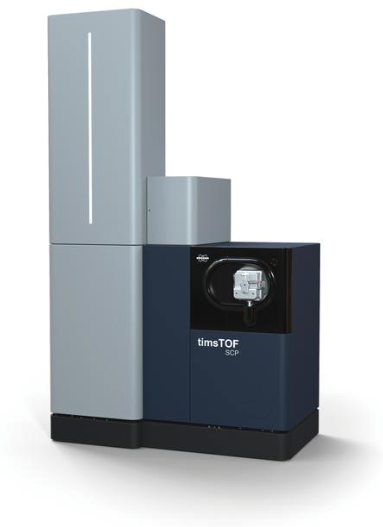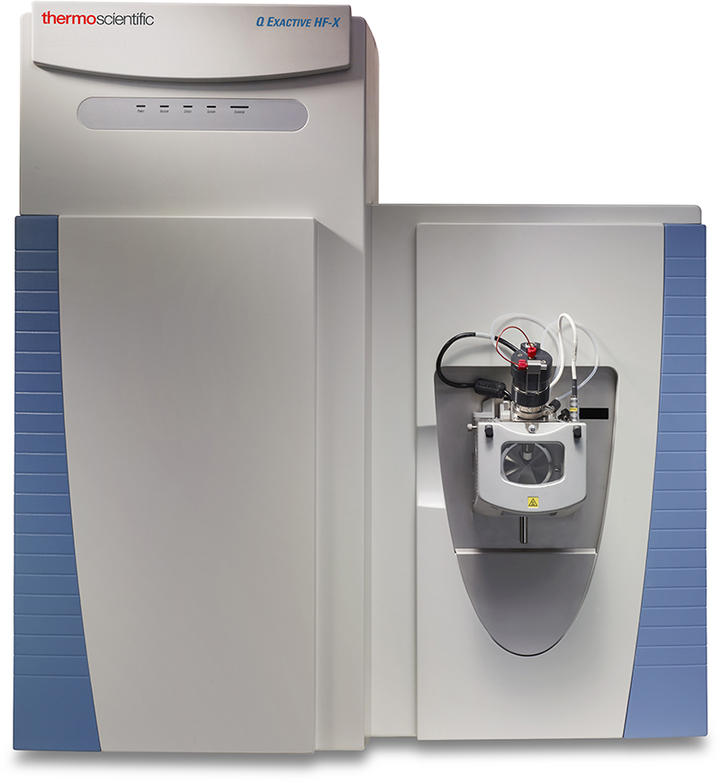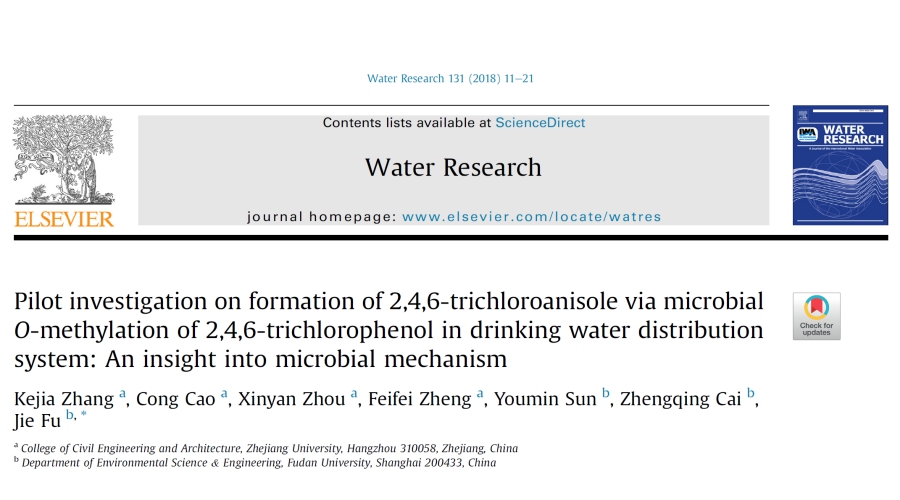
Abstract:
Taste & odor (T&O) problems in drinking water are always complained by customers. Recent studies haveindicated biofilms in drinking water distribution system (DWDS) are always ignored as potential sourcesof T&O compounds. In this paper, the formation of 2,4,6-trichloroanisole (2,4,6-TCA), one of the dominantT&O compounds, was investigated in a pilot-scale DWDS. The addition of precursor 2,4,6-trichlorophenol (2,4,6-TCP) of 0.2 mg/L induced the formation of 2,4,6-TCA with a maximum yield of~400 ng/L, and the formation kinetics can be described by a pseudo-first-order kinetic model. Effects ofwater distribution factors such as pipe material, temperature, flow velocity, and residual chlorine on theformation of 2,4,6-TCA were evaluated, and the pipe material was found to have the most remarkableeffect. Ductile iron and stainless steel pipes produced much more 2,4,6-TCA than polyethylene (PE) pipe.The biofilm microbial communities on the three types of pipe walls were then comprehensively analyzedby heterotrophic plate count and 16S rRNA/ITS1 genes high throughput sequencing. The links betweenthe 2,4,6-TCA formation potential and the microbial activity in genus and enzymatic levels in DWDS havebeen revealed for the first time. According to the characteristics of microbial assemblages of producing2,4,6-TCA, quorum-sensing (QS) bacterial signaling system and extracellular DNA (eDNA) may be twopromising targets for biofilm treatment and 2,4,6-TCA control in DWDS.
? 2017 Elsevier Ltd. All rights reserved.
Introduction
Taste and odor (T&O) problems in drinking water always getmassive complaints from customers based on their directly sensoryjudgement (Malleret et al., 2003). The earthy-musty T&O caused byseveral predominant compounds including geosmin (GSM, earthy),2-methyloisoborneol (2-MIB, musty) and 2,4,6-trichloroanisole(2,4,6-TCA, musty/moldy) is the most frequently detected indrinking water supplies (Wang et al., 2015). Previous researches have focused on widely known GSM and 2-MIB which are produced by many actinomycetes, cyanobacteria and fungi (Jensen et al.,1994; Zhang et al., 2016a), while 2,4,6-TCA has been less investigated.
In recent years, Zhang et al. (2016c) made a survey on the occurrence of the haloanisole odorous compounds in tap water of typical Chinese cities, and found 2,4,6-TCA in all samples in bothsummer and winter. Urase and Sasaki (2013) analyzed the 2,4,6-TCA concentration in biologically treated water from large-scaletreatment plants, finding that the 2,4,6-TCA concentration(4.3e37.7 ng/L) was comparable with GSM (3.7e42.2 ng/L). Due to
the ubiquity and potential hazards to public health, the formationkinetics, mechanisms, and condition effects of 2,4,6-TCA in watertreatment and distribution system are of great concerns. Yet, the related information on 2,4,6-TCA formation in drinking water are largely unknown.Typically, 2,4,6-TCA in drinking water has two origins: thechlorination of natural organic compounds (i.e., anisole) in rawwater (Zhang et al., 2016b) and the microbial O-methylation of precursor 2,4,6-trichlorophenol (2,4,6-TCP) (Benanou et al., 2003).Chlorine origin mainly comes from chlorination reaction betweensodium hypochlorite (NaClO) and anisoles, and the formed chloroanisoles
include 2,4-dichloroanisole (2,4-DCA) and 2,6-chloroanisole (2,6-DCA) besides 2,4,6-TCA. Lower pH (e.g.,* Corresponding author.E-mail address: [email protected] (J. Fu).Contents lists available at ScienceDirectWater Research
journal homepage: www.elsevier.com/locate/watreshttps://doi.org/10.1016/j.watres.2017.12.0130043-1354/? 2017 Elsevier Ltd. All rights reserved. Water Research 131 (2018) 11e21
link text:https://www.sciencedirect.com/science/article/pii/S0043135417310084











